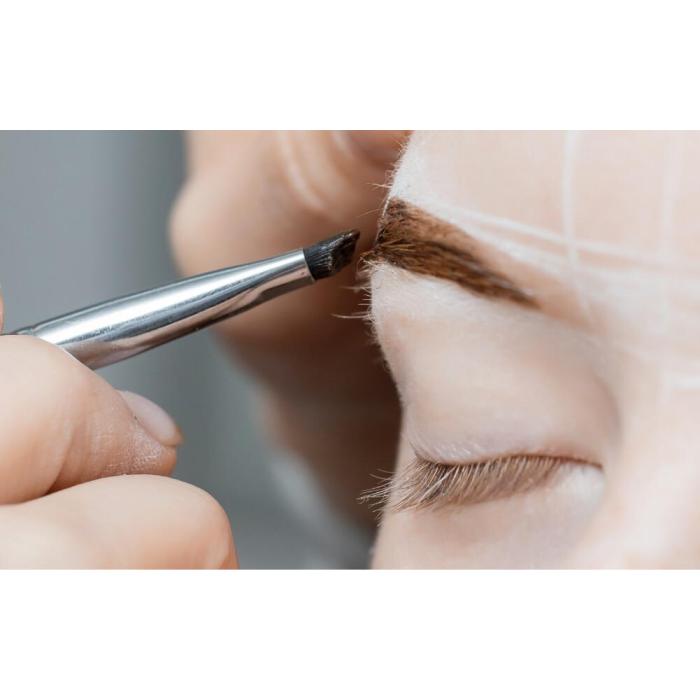Natural vs black henna
Firstly, it’s important to clarify the different types of henna. Real, natural henna is sourced from the leaves of the henna shrub (Lawsonia Inermis) which contains a powerful staining molecule called Lawsone. This orange-brown stain is all natural, safe to use and has been around for thousands of years.
Henna brows are created by applying a henna dye to eyebrows as a tinting technique. The henna dyes the brow hairs as well as staining the skin below with the desired shade, making the brows appear fuller. However, it appears that some dyes currently being used to perform henna brows treatments are not henna in its natural form. This henna is referred to as ‘black henna’ and can contain synthetic dyes, such as PPD. In some cases, brands were found to be using prohibited materials under EU cosmetic legislation, some of which could be harmful and are on the CMR list. CMR substances are those that are carcinogenic, mutagenic or toxic to reproduce.
Banned and restricted ingredients
Following our thorough research of the henna brows market, we discovered that there are harmful levels of unsafe chemicals commonly being used in henna dyes on sale in the UK. We also discovered that there are several restricted ingredients being used at unregulated levels that significantly exceeded the maximum limits outlined in EU Regulation 1223/2009.
Research has concluded that some of the best-performing and skin-staining henna brands were actually the ones containing the highest levels of the restricted and banned ingredients. These ingredients can be dangerous and harmful if exposed to. Some of the black henna products we tested were found to contain P-Aminophenol at levels that exceeded legal limits in the UK. Our chemical analysis also exposed several products containing Sodium Perborate, a substance that is banned for use in cosmetic products in the EU.
PPDs in henna
One of the key perceptions of henna is that because it’s naturally derived, it doesn’t contain major allergens such as PPD. In fact, when doing our research, we found that the majority of henna treatment products we reviewed were black henna containing PPD. PPD is a perfectly legal material to use in the process of dyeing hair, however, it is restricted and has to be used within specified safe limits with the appropriate warnings displayed. Some of the black henna products we tested contained PPD exceeding the legal limit of 2%.
Of significant concern to us was that the team also came across brands claiming their black henna products were safe for use on pregnant women and breast-feeding mothers. Regulations are explicitly clear that even the regulated amounts of synthetic dyes are not to be used on pregnant/breast-feeding women or minors.
Our work to develop a safe and effective henna product
Before the henna trend had got traction, our product development team were already working hard behind the scenes researching henna products with a view to introducing HD Brows henna training. However, following months and months of research, formulation development and working with a range of suppliers, we have come to the following conclusion: developing a truly PPD-free and legally compliant henna product that delivers results to the standards we expect for our stylists and their customers is not presently possible.
After months of development, our team developed a henna-free hybrid brow tint. The HD Brows BrowStay Hybrid Dye is a great alternative to henna, offering hair dye and skin stain benefits in an effective, henna-free, safe formulation. We have also developed a range of hybrid brow tinting training courses, incuding in person academy training, to ensure stylists are using the product safely and correctly.
Can I still safely offer henna brow treatments?
We’re not suggesting that anyone stops offering henna brows. We would simply advise that you request to view the ingredients list and Material Safety Data sheet; both of these should be readily available from your henna dye provider. We know that client safety is paramount to you all and this way, you can judge the safety of the treatment for yourselves. You could also choose to offer hybrid brow tinting treatments for a safer option to the defined, skin-staining finish.


Share